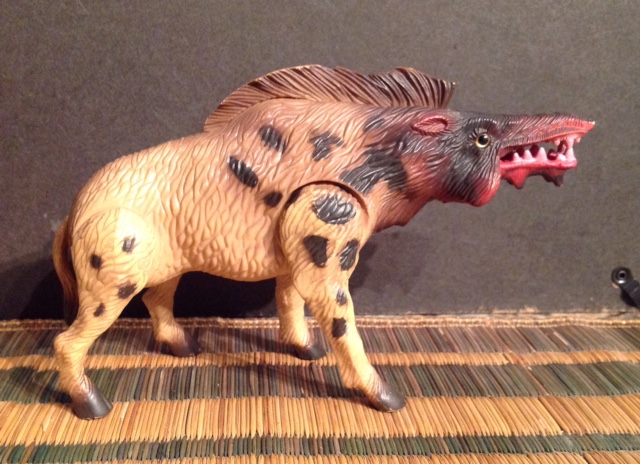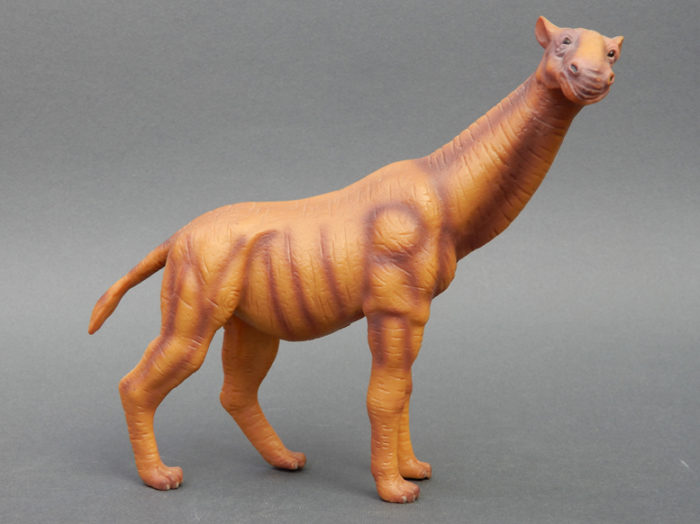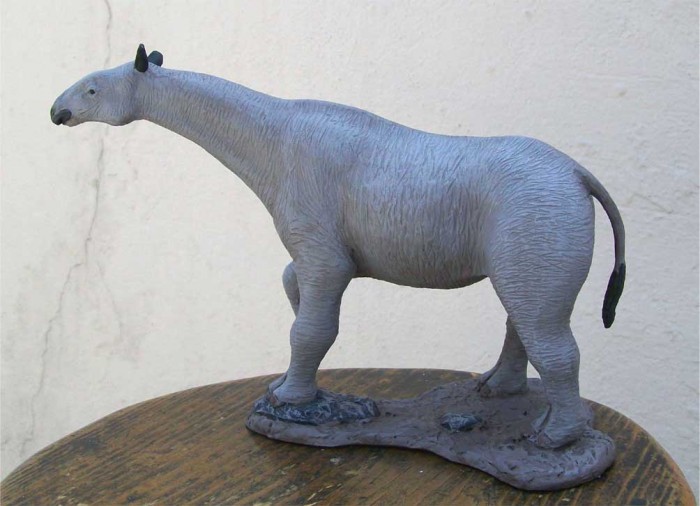Hyaenodon was an interesting predatory animal that first evolved 42 million years ago and lived from the Late Eocene through to Early Miocene. The first thing to know about them is that they are not related to hyenas. In fact, they were a creodont, a long extinct group of mammals that did not survive the Miocene.
Age: Oligocene
Review: Hyaenodon gigas(Wild Safari Prehistoric World by, Safari Ltd)

For over 25 million years Hyaenodons hunted across Africa, Asia, North America and Europe. They were formidable predators that had oversized jaws. When hunting they would have probably ambush their prey with a quick rush, grab on to the head or neck with that impressive maw, and secure the kill.
Review: Indricotherium (Malcolm Mlodoch for Fauna Casts)
Review: Medusa (Bullyland)

Today I want you to introduce you to one of those creatures everybody knows, but knows almost nothing about, a jellyfish. Jellyfish are a very very old group of animals, they date back to the famous Ediacarian, more than 600 mya.
Review: Megachoerus AKA Archaeotherium (Tyco)

Here we will be taking a look at a classic rendition of the prehistoric mammal Archaeotherium, as perceived by the Tyco company in 1990 for their awesome Dino-Riders toy line. This particular figure was released for the Ice Age sub-theme (under the subgenus Megachoerus), which also featured a motorized woolly mammoth as well as an articulated Smilodon and Megatherium.
Review: Monanthesia and Cycadeoidea (CollectA)

Greens, stems, and leaves, but no teeth, no blood, no gore . . . no wonder plants seldom provide more than background for movies or our dinosaur collections. Day of the Triffids (1962) is the classic plant horror film par excellence, where seemingly harmless plants attack and kill humans and charge to take over world domination within days (for those of you that can’t stand classic B-movies or modern semi-quality TV adaptations of them, Splinter may be a more thrilling choice, though the antagonist is !SPOILER ALERT!
Review: Palaeotherium (Starlux)
Review: Paraceratherium (Collecta)

Paraceratherium, also commonly known as Indricotherium or Baluchitherium, was a genus of gigantic hornless rhinoceros-like mammals, belonging to the family of the Hyracodontidae. Their fossils have been found in many parts of Asia, including Kazakhstan, Pakistan, India, Mongolia, and China.
Review: Paraceratherium (IToy)

At the end of the Oligocene Climate change have made its presence known all across the globe. This change created chaos, turning once lush and fertile environment into dusty and windswept landscape. In this part of the world that would be known today as Mongolia, a mighty riven once meandered across the plains creating rich forest and lush savannah.
Review: Paraceratherium, Deluxe (CollectA)
Review: Prehistoric Animal Set (The Ark by Joy City)

Every now and again, something rather interesting pops up that you wouldn’t expect to be as good as you’d think. The toy sets you would see at supermarkets like Aldi and Lidl, often seen as cheap item makers, having something worth getting. Here, we examine the Joy City line on prehistoric animals, a counterpoint to there Dinosaur wave, which seems more typical chinasaur.
Review: Prehistoric Landscapes Cycad by Safari Ltd.

Here comes another (unfortunately retired) one of the prehistoric plants produced by Safari Ltd, the other two being reviewed here. I did not include it in the first review as my usual retailer didn’t have it in stock anymore and it took some time to find one for a reasonable price.
Review: Prehistoric Life Toob (Safari Ltd)
Review: Prehistoric Mammal Skulls (Toob by Safari Ltd.)

Review: Prehistoric Mammals Tube (Collecta)

Collecta has been bringing out prehistoric animal tubes over the last few years, and while some gave us some great new designs, others have just given us miniature versions of models they already have. This is a case of the latter, as they have released these small versions of their ancient mammals.







